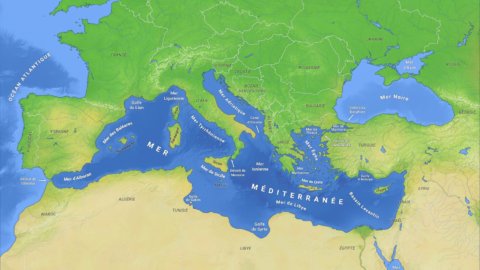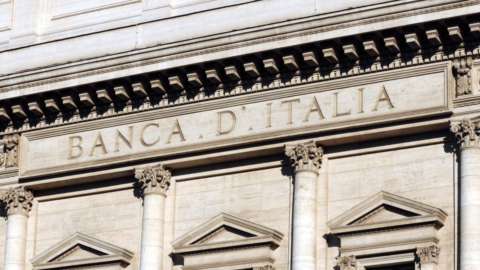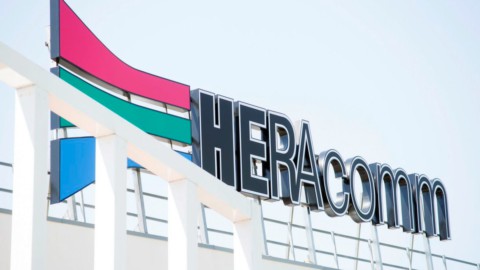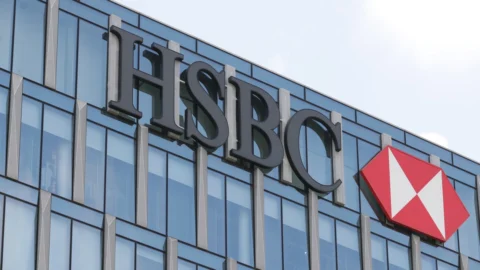LMediterranean area will assume a new key role in terms of energy supply in the short and medium term. Within it, Italy will be able to be central not only for dialogue with African suppliers, but also for the efficiency of its latest generation ports.
The fourth Report says so MED & Italian Energy presented today at European Parliament. This year's edition is titled “Alternative fuels: a strategic option for the Euro-Mediterranean area?” and is the result of the synergy between SRM (Study Center connected to Intesa Sanpaolo Group) to the ESL@Energy Center of the Polytechnic of Turinand the collaboration with the Matching Energies Foundation.
The study analyzes how thesupplying di Petroleum e gas over the last 20 years, but above all what has happened in the last few months, in which there has been a revolution of sources of supply and of the supply chain at advantage of alternative energy sources. Following the change in this process, there is also a geographical shift of energy sources, which are already found in the heart of the Mediterranean where Italy could play an important strategic role.
"The energy has become not only a fundamental lever for pursuing the objectives of ecological transition and neutrality but also a strategic asset and geopolitical. We must look with increasing attention to Mediterranean region, a young market with enormous potential for the production of alternative and renewable energies” he underlines Francesco Profumo, president of the Compagnia San Paolo. "Our country is the natural "bridge" between North and South: it is necessary to mobilize infrastructural investments and the best skills to make them an opportunity for growth and development".
For now, oil still has the dominant role, but renewables and biofuels are gaining share
Within the European Union we have been talking about for about 20 years energy mix to indicate how much of the various energy sources are used by countries and the study notes that the Petroleum it is still dominant but now they are making their way too renewables and biofuels. La share of oil has decreased by 6 percentage points in the last two decades, passing from 38,7% to 32,7%, while that of the Gas, which went from 20,6% to 24,4%. But to have done a sharp leap were renewables and biofuels which gained more than 11 percentage points from a share of 6,4% to 17,9%.
As is known, following the war events, gas consumption has been reduced, diversifying sources and changing supplies. Until 2021, EU imported 90% of its consumption of gas, Of which the 45% bought it from Russia, share which continued to grow from the 31% recorded in 2010. Russia itself supplied 27% of imports of Petroleum and 46% of those of carbon. The others Gas suppliers for the EU it is Norway, the USA, Qatar and Algeria which cover 47,7% of the needs.
Reversal of the situation in 2022. Algeria-Italy dialogue
In 2022 (especially March-September) le Russian gas supplies for the EU they are decreased by 80% and a process of reducing demand (from end users), diversifying supplies and increasing imports of LNG together with a strengthening of renewables has begun. Italy is among the countries that have been most affected by the reduction of Russian gas by reacting with higher imports in particular from Algeria: in September and October 2022 the import of gas through the Transmed (entry point of Algerian gas) was more than 40% of total gas imports. At the same time, in September the import of Russian gas through the TAG pipeline it was equal to 8,7% of the total import and even less than 1% in October.
The role of the Mediterranean: renewables growing by more than 100% in 5 years
“Il Southern Mediterranean it therefore becomes strategic for overcoming the crisis and setting up future energy balances, not only for fossil fuels” underlines the report. "At a strategic level it is important to structurally strengthen the new central role of the Mediterranean to ensure the security of energy supply in the short and medium term".
Il pace of growth of capacity renewable in the Middle East and North Africa it is expected to increase by more than 100% In the next 5 years old, going from 15 GW to over 32 GW. Capacity expansion is concentrated in five countries: United Arab Emirates, Saudi Arabia, Israel, Egypt and Morocco.
Another opportunity to implement decarbonisation will be represented by the investments in hydrogen: Morocco and the United Arab Emirates have already drawn up a Road Map and/or signed a memorandum on the issue of green hydrogen. And after all, on the occasion of COP27 in Sharm el Sheikh, the EU also signed a MoU with Egypt to create a partnership on green hydrogen.
The long-term vision: focus on security and social equity
Fossil sources across the Mediterranean are still an obligatory choice given the ongoing geopolitical crisis between Russia and Ukraine. But, over the long term, the landscape will change and a shift towards energy commodities. About the evolution of energy systems in the Mediterranean we talk about “energy trilemma” which consists in environmental sustainability, energy security ed equity. The conflict between Russia and Ukraine is shifting the priority from environmental sustainability to security and social equity.
Nthe long run strategic political choices will have to rebalance the "energy trilemma": the exploitation of locally available renewable resources could lead to benefits not only in terms of growing sustainability, but also with reference to the security of supply for countries highly dependent on imports and social equity, guaranteeing energy accessibility for all citizens, says the report. L'electric energy from renewable sources should assume the central role in the future energy mix and in the construction of a new "green" dialogue, even if electricity alone will not be able to guarantee the complete decarbonisation of the Mediterranean energy systems which require a synergy with other commodities, such as the hydrogen.
Using alternative fuels will help the circular economy
In this context, a non-negligible role could be played by alternative fuels, both biofuels is synthetic fuels (obtained by combining hydrogen and CO2), the exploitation of which is part of an approach of The circular economy consistent with the European Green Deal and which have already been included in the strategic plan of the European Commission "REPowerEU". Biofuels from the EU transport sector, accounting for 83% of the total fuels used in 2020 in the transport sector.
Maritime transport and port facilities: Italy at the forefront
Particular attention in these scenarios has been given to the role ofmaritime transport and port facilities, scope in which, again Italy it can play a leading role, with the necessary strategic actions. Ports are becoming poles of industrial and energy development, above all with the new Green Ports and Green Ships models: as terminals of fossil and renewable energies, but also as outlet points for pipelines coming in particular from North Africa which carry energy flows and also close to industry ad high energy intensity, theirs strategic and economic value will grow.
La Italian port it has an important energy characterization: 34% of traffic is made up of liquid bulk (over 163 million tons in 2021). In the first 6 months of 2022, 80 million tonnes were exceeded (+5,6% on 2021). The top 5 Italian energy ports, Trieste, Cagliari, Augusta, Milazzo and Genoa, concentrate about 70% of traffic. The port of Trieste in particular is assuming a new role also within the European Union, also thanks to the recent appointment of its president, Zeno D'Agostino, of the European Sea Port Organisation.
Also with PNRR an endowment of 9,3 billion euros was allocated to Italian maritime infrastructures with the objective of energy efficiency and the general sustainability of our ports.
It was born and is evolving in Italy, a new port model which is tracing the more advanced ones of Northern Europe: the GreenPort, i.e. a port of call increasingly aimed at making its energy consumption more efficient, serving ships using alternative fuels and acquiring docking infrastructures and equipment for the diversified bunkering of ships. But also to use digital technologies, intermodal models and increasingly aimed at pursuing the objective of reducing emissions.
The shipping sector is undergoing great evolution
If the entire global transport sector is responsible for 24% of total CO2 emissions, maritime transport it accounts for 2,3% (and 1,8% of all greenhouse gases). “The environmental footprint of the maritime sector is certainly quite small compared to the huge volumes of goods transported around the world, but in any case the decarbonisation of shipping is on the priority list of both the United Nations, through the IMO (International Maritime Organization), both of the European Union” observes the report.
- shipowners are called upon to invest urgently to make their fleet ever greener by using alternative fuels and technologies that reduce emissions to zero. It is true that investing in net low/zero emissions fuels is expensive, but these fuels are currently up to three times more expensive than conventional marine fuels. From January to October 2022, 63% of the fleet in the orderbook (ships in shipyards under construction) is represented by vessels powered by alternative fuels, mainly Liquefied Natural Gas and Methanol.
According to some in 2024 the whole European industry will spend for the decarbonisation of transport by sea of containers between a minimum of 3,5 billion and a maximum of 14,5 billion dollars for the application of the new environmental standards and the transition to green fuels. In the January/October period, LNG held the record on the shipping orderbooks with 52% of the total fleet powered by alternative fuels, methanol in second place with 8,5%. A further 11,4% of vessels will be "Ammonia Ready".
Many container ships are renewing fleets: orders worth billions of dollars
Many container carrier they are investing in alternative fuels, just to name a few: the Chinese Cosco Shipping Holdings ordered 12 container ships 24.000 TEU dual fuel methanol vessel valued at approximately $2,9 billion split between its container shipping units, OOCL and Cosco Shipping Lines – for 7 and 5 vessels respectively. The Danish Maersk announced in October the order for 6 Methanol dual fuel containerships with a capacity of 17 TEU. The new units, to be delivered in 2025, will join the others of the same type that the Danish group has recently commissioned and will receive in the same year (19 in total). The French CMA CGM has announced that it has placed orders for 10 LNG dual fuel container ships and 6 methanol fueled vessels, bringing its order backlog to 69 vessels. The MSC Swiss liner has placed a maxi order of 28 LNG container ships for a total cost of almost 3,5 billion dollars. Furthermore, the order book for 3 LNG-powered cruise ships is worth 3 billion euros. The first delivery took place in October 2022: the MSC World Europa is the first cruise ship in the world to be equipped with the brand new LNG fuel cell technology.





